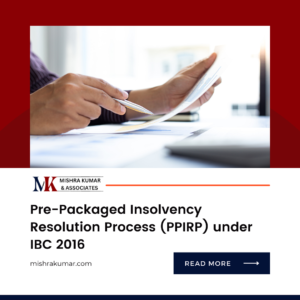Guiding Insolvency Professionals Through the Liquidation Process
Liquidation is a significant phase in the insolvency resolution process, and it involves the orderly winding down of a company’s affairs to distribute its assets to creditors and stakeholders. Insolvency professionals play a pivotal role in managing the liquidation process. In this blog, we will explore the importance of assistance in carrying out the liquidation process and how professionals can support insolvency practitioners in this critical phase.
INTRODUCTION
Liquidation is a significant phase in the insolvency resolution process, and it involves the orderly winding down of a company’s affairs to distribute its assets to creditors and stakeholders. Insolvency professionals play a pivotal role in managing the liquidation process. In this blog, we will explore the importance of assistance in carrying out the liquidation process and how professionals can support insolvency practitioners in this critical phase.
ANALYSIS
Understanding the Liquidation Process
Before discussing the role of assistance, let’s clarify what the liquidation process entails:
Liquidation: Liquidation is the final stage of the insolvency resolution process, triggered when it is determined that the distressed company cannot be revived or when the resolution process fails to yield a viable resolution plan.
Insolvency Professionals: Insolvency professionals, often referred to as liquidators in this phase, are responsible for realizing the company’s assets, settling its liabilities, and distributing the remaining proceeds to creditors and stakeholders.
Importance of Assistance in Liquidation
Why is assistance essential for insolvency professionals during the liquidation process?
Legal and Regulatory Compliance: The liquidation process is subject to specific legal and regulatory requirements. Professionals with expertise in insolvency laws and regulations can guide insolvency practitioners to ensure compliance throughout the process.
Asset Realization: Efficient realization of the company’s assets is crucial for maximizing the value available for distribution to creditors. Asset valuation experts and auctioneers can assist in achieving the best possible outcomes.
Creditor Communication: Effective communication with creditors and stakeholders is vital. Professionals can assist in maintaining transparent and open lines of communication throughout the liquidation process.
Debt Settlement: Managing and settling the company’s debts, including negotiations with creditors and the prioritization of claims, requires financial acumen and negotiation skills.
Distribution Process: Professionals help design and execute a fair and transparent distribution process to ensure that creditors receive their dues in accordance with legal priorities.
Part 3: The Liquidation Assistance Process
The assistance process for insolvency professionals during liquidation typically involves the following steps:
Comprehensive Assessment: Professionals conduct a thorough assessment of the company’s assets, liabilities, and financial standing.
Strategy Development: A liquidation strategy is formulated, outlining the steps to be taken, asset realization methods, and debt settlement approaches.
Execution: The liquidation plan is executed, involving the sale of assets, negotiation with creditors, and debt settlement.
Compliance and Reporting: Professionals ensure that all legal and regulatory requirements are met, including the submission of necessary reports and documents.
Stakeholder Engagement: Effective communication with creditors, stakeholders, and regulatory authorities is maintained throughout the process.
CONCLUSION
The liquidation process is a critical phase in the insolvency resolution journey, and the role of insolvency professionals is pivotal in ensuring a fair and equitable distribution of assets to creditors and stakeholders.
Professional assistance provides insolvency practitioners with the expertise and support needed to navigate the complex legal, financial, and operational challenges inherent in the liquidation process. It helps optimize asset realization and facilitate an orderly and transparent wind-down of the distressed company.
FAQs
Q1: What happens to the employees of a company undergoing liquidation?
A1: Employee claims, including salary arrears and other dues, are typically treated as operational creditors’ claims and are paid in accordance with the liquidation process’s priority.
Q2: How long does the liquidation process typically take?
A2: The duration of the liquidation process can vary widely depending on the complexity of the case, the number of assets to be realized, and the extent of creditor claims. It can take several months to several years.
Q3: Are there any fees associated with hiring professionals for liquidation assistance?
A3: Yes, professionals providing assistance during the liquidation process typically charge fees for their services. These fees are typically borne by the insolvency estate and are subject to approval by the creditors’ committee or the concerned authorities.
RECENT POSTS
- The implication of Stamp Duty on Scheme of Arrangement (Merger & Amalgamation):
- Pre-Packaged Insolvency Resolution Process (PPIRP) under IBC 2016
- BUY BACK OF SHARES V/S DIVIDEND
- Comprehensive comparative analysis of SEBI (Listing Obligations and Disclosure Requirements) (Second Amendment) Regulations, 2021.
- SEBI (Delisting of Equity Shares) Regulations, 2021-Imposes new responsibilities on the board of directors.

The implication of Stamp Duty on Scheme of Arrangement (Merger & Amalgamation):
The implication of Stamp Duty on Scheme of Arrangement (Merger & Amalgamation): The Scheme of Arrangement is a legal mechanism under corporate law that allows

Pre-Packaged Insolvency Resolution Process (PPIRP) under IBC 2016
Pre-Packaged Insolvency Resolution Process (PPIRP) under IBC 2016 The Insolvency and Bankruptcy Code (IBC) 2016, is a comprehensive legislation aimed at consolidating and amending laws

BUY BACK OF SHARES V/S DIVIDEND
BUY-BACK OF SHARES V/S DIVIDEND A dividend offers cash rewards to all shareholders in accordance with their stake in the company, whereas a share buyback

Comprehensive comparative analysis of SEBI (Listing Obligations and Disclosure Requirements) (Second Amendment) Regulations, 2021.
Comprehensive comparative analysis of SEBI (Listing Obligations and Disclosure Requirements) (Second Amendment) Regulations, 2021. Securities and Exchange Board of India (“SEBI”) vide notification dated May

SEBI (Delisting of Equity Shares) Regulations, 2021-Imposes new responsibilities on the board of directors.
SEBI (Delisting of Equity Shares) Regulations, 2021-Imposes new responsibilities on the board of directors. Securities and Exchange Board of India (“SEBI”) vide notification dated 10th

Summary of Insolvency and Bankruptcy Board of India (Liquidation Process) (Amendment) Regulations, 2024
Summary of Insolvency and Bankruptcy Board of India (Liquidation Process) (Amendment) Regulations, 2024 The Insolvency and Bankruptcy Board of India (IBBI) recently issued amendments to

